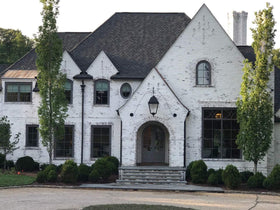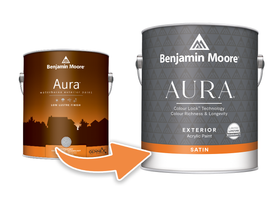
3 Problems You’ll Encounter Repainting Your Old Home
Repainting a home is always a challenge. Not only can you discover damage you didn’t know about before, you may also encounter any number of problems as a result of your old home’s construction, the paint used before, and even just the way your home sheds moisture. When repainting your home, here are just a few problems you can encounter. We’ve also included some easy tips to prevent and correct these issues, so your old home looks brand new for longer.
1. Peeling
Peeling happens to the best of us because sometimes what causes it is completely outside of our control. Moisture escaping homes in strange ways, for example, causes peeling in places you didn’t even know were getting more than their fair share of water. Always paint onto dry surfaces to cut down on peeling paint, never onto wet surfaces, especially wooden surfaces. An exhaust fan can help dry out areas you want to paint. Another way to combat peeling is to properly clean your surface, especially if it’s glossy, and get a quality latex primer and paint. Latex lets small amounts of water through, reducing peeling.
2. Chalking
Chalking is a fairly common problem with exterior paint and is the result of paint turning into a dust, mostly caused by the paint film decomposing into a loose powder on the surface of your paint. Note that a little chalking is entirely normal and almost unavoidable when painting, but excessive chalking not only looks bad, but also ruins your paint job with excessive dustiness. The best way to control chalking is with the paint itself. Low quality paints, ones that use a lot of pigment or are meant for the indoors, will lead to chalking. If you’re already dealing with chalking, scrub the wall with a stiff bristle brush and rinse with a garden hose. If the problem persists, paint over with a quality primer and use a different paint.
3. Alligatoring
Named after the scaly alligator, alligatoring refers to paint that dries into small, isolated chunks rather than a smooth surface. The result is a patchy and scaly paint job that looks like pieces of new paint were almost splattered over the old, which is still clearly visible. Alligatoring is a common issue with outdoor paint especially, where changing weather conditions can make paint dry in strange ways. It’s also common when painting over old paint since the new and old may not bond properly. The easiest way to avoid alligatored paint is start over. Scrape off the paint, sand down the surface, prime it with a quality primer, and paint over it again. For outside conditions, paint on good paint days: cool but not cold and dry.
Painting old homes can lead to any number of problems, often before you’ve even put any paint on the walls. So start at the paint store: invest in quality paint and tools before you start any project, and properly prepare the area for your fresh coats. This alone will reduce your chances of any unwanted surprises and leave your home looking its best.



